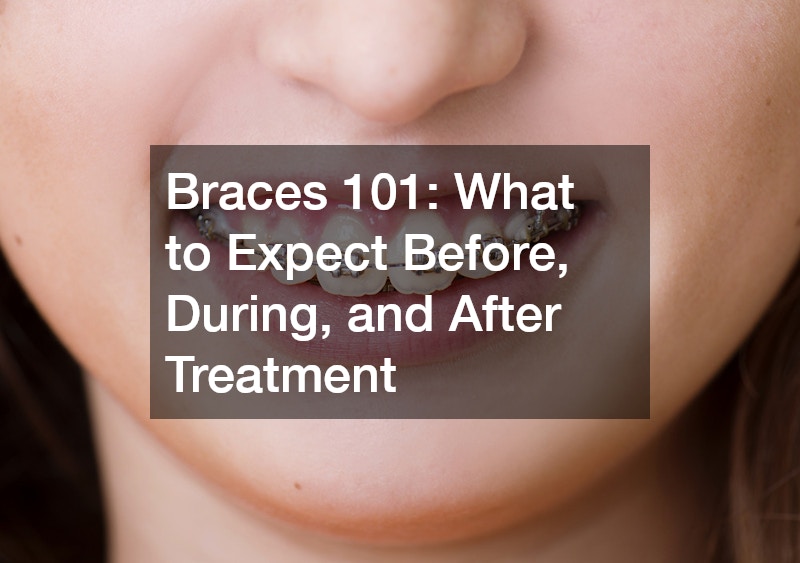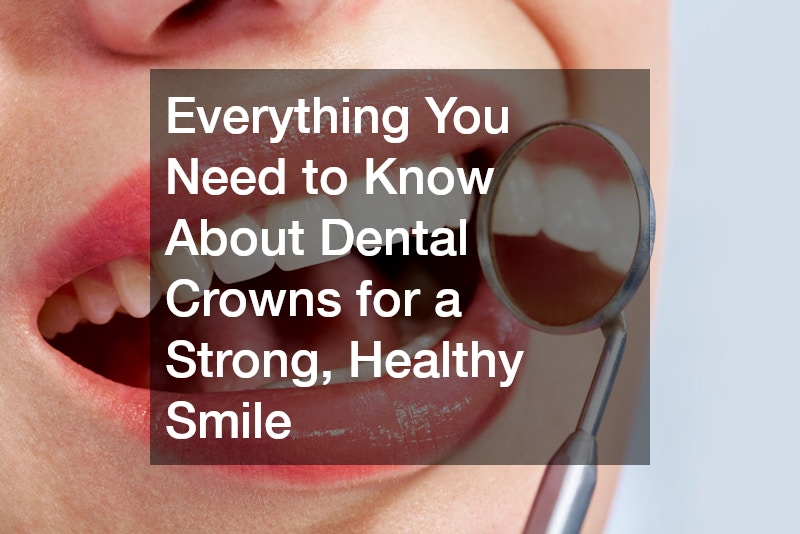
Braces 101: What to Expect Before, During, and After Treatment
Introduction
Embarking on the journey to a beautiful smile involves understanding the ins and outs of orthodontic treatment. From the initial consultation to the final follow-up appointment, each step of the braces process is important. This article will guide you through what to expect before, during, and after getting braces, offering insights into the different types available and tips for maintaining your new smile. Whether you’re a prospective patient or a curious guardian, this comprehensive guide aims to prepare you for what’s ahead. With knowledge as your ally, you can make informed decisions concerning your orthodontic care.
Video Source
1. What Are the Different Types of Braces Available?
1.1 Metal Braces
Metal braces are the most traditional and popular type of orthodontic treatment. Made from high-quality stainless steel, they consist of brackets and wires that gradually adjust the position of your teeth. A major benefit of metal braces is their durability and effectiveness, making them an ideal choice for complex dental issues. They are often more affordable compared to other types of braces, aligning with various financial plans. Despite their visible appearance, many wearers add colorful bands for a personalized touch.
1.2 Ceramic Braces
Ceramic braces are similar in size and shape to metal braces but feature tooth-colored or clear brackets that blend with the teeth. This design offers a more aesthetic appeal, popular among teenagers and adults concerned with appearance. Although slightly more fragile than metal braces, they are effective in treating a variety of orthodontic issues. They may require meticulous care to prevent staining from food and drinks. Ultimately, ceramic braces offer a balance of function and appearance for those seeking a discrete option.
1.3 Lingual Braces
Lingual braces are unique as they are placed on the inner side of the teeth, making them nearly invisible from the outside. This type is excellent for patients conscious about the aesthetic implications of braces. Despite their appeal, lingual braces may require an adjustment period as they can initially affect speech and tongue posture. They are tailored to fit each patient, making them a premium choice with potentially longer adjustment times and appointments. For those who seek complete discretion, lingual braces are a compelling option despite the possible trade-offs.
1.4 Invisalign and Clear Aligners
Invisalign and other clear aligners offer a modern approach to orthodontic treatment, utilizing clear, removable trays to shift teeth. These aligners are custom-made using advanced technology, and patients typically receive a series of trays for gradual adjustments. Their removability allows for easy oral hygiene and unrestricted eating habits, though adherence to prescribed wear time is crucial for effectiveness. While not suitable for every case, clear aligners are ideal for mild to moderate orthodontic corrections. Patients favor them for their near-invisible appearance and convenience.
1.5 Self-ligating Braces
Self-ligating braces employ a unique clip mechanism that holds the wire in place without traditional elastic bands. The lack of ligatures reduces friction and potentially shortens treatment time, offering a more comfortable experience. Patients appreciate fewer orthodontic visits due to reduced need for adjustments. Self-ligating braces are available in metal or ceramic options, providing both functionality and aesthetic choices. These braces combine the reliability of traditional systems with modern advancements in orthodontic technology.
2. How Do I Prepare for Getting Braces?
2.1 Scheduling the Initial Consultation
The journey to getting braces begins with scheduling an initial consultation with an orthodontist. During this visit, a comprehensive examination of your teeth and bite will be conducted. The orthodontist will evaluate your oral health and discuss potential treatment options tailored to your needs. This preliminary step is crucial for setting realistic expectations and is typically covered by insurance. Gathering necessary records, such as X-rays and dental history, will aid in the formulation of a personalized plan.
2.2 Understanding the Treatment Plan
A successful orthodontic journey hinges on a well-devised treatment plan by your orthodontist. This plan will outline the expected duration, type of braces, and any special considerations during treatment. Educating yourself on the rationale behind the chosen method can enhance your participation in the process. Clear communication with your orthodontist is key to addressing any concerns or questions. Being informed about each step builds confidence and aids in overall treatment adherence.
2.3 Financial Considerations
Understanding the financial aspects of getting braces is critical before committing to treatment. Costs vary based on the type of braces, geographical location, and specific orthodontic needs. Many orthodontic offices offer payment plans and work with insurance providers to streamline the financial component. As an investment in your oral health and self-confidence, it’s important to thoroughly explore all financial options available. Asking for clarification on fees and services during your consultation can prevent unexpected financial surprises later on.
2.4 Pre-Treatment Dental Care
Prior to having braces applied, maintaining optimal dental health sets the stage for a successful treatment. Thorough cleanings and addressing cavities or gum issues are imperative. Your dentist may recommend a fluoride treatment to strengthen enamel and reduce sensitivity that can arise with braces. Understanding how to floss effectively and choosing appropriate dental products can make transitioning to braces smoother. Taking proactive measures in dental care ensures a healthy environment for your orthodontic journey.
2.5 Emotional and Mental Preparation
Embracing braces as part of your life requires mental and emotional readiness. It’s natural to have mixed feelings ranging from excitement about the end result to apprehension about the process. Discussing concerns with your orthodontist or peer group can provide reassurance. Engaging with online communities and support groups can also offer comfort and tips from individuals with similar experiences. Remember that the temporary adjustments are in service of a lifetime of confidence with your new smile.
3. What Can I Expect During Braces Treatment?
3.1 Initial Fitting and Placement
The initial fitting of braces is a pivotal moment, marking the start of your orthodontic treatment. During the appointment, the orthodontist precisely positions brackets and threads wires through them, which may take a couple of hours. The process is generally painless, though some patients experience short-term discomfort as the braces begin applying pressure. Remember to ask questions and understand what to expect post-procedure. Preparing a soft food diet for the initial days can ease the transition as your mouth adjusts.
3.2 Adjustments and Regular Check-Ups
Regular check-ups and adjustments are integral to the effectiveness of braces treatment. Typically scheduled every 4 to 6 weeks, these appointments allow the orthodontist to monitor progress and make necessary modifications. Adjustments may include tightening wires or changing bands to continue moving teeth into desired positions. Patients often notice varying levels of discomfort following these visits, which is normal as teeth adapt to new positions. Consistent attendance at these check-ups is crucial to avoid treatment delays and ensure optimal outcomes.
3.3 Managing Discomfort and Pain
Managing discomfort is part of adapting to life with braces. Common strategies include over-the-counter pain relief and cold compresses to alleviate initial soreness. Orthodontic wax can help mitigate irritation from brackets or wires that come into contact with the gums or cheeks. Some patients find relief through saltwater rinses, which can reduce inflammation and promote healing of mouth sores. Understanding these discomforts are temporary aids in maintaining a positive outlook on the transformative journey.
3.4 Diet and Eating Habits
Adapting your diet is necessary when embarking on treatment with braces. Hard, sticky, or chewy foods can damage brackets and wires, so they should be avoided. Instead, focus on softer foods like yogurt, mashed potatoes, and pasta, which are easier to manage with braces. Maintaining a balanced diet is still important, so incorporating fruits and vegetables is key — just opt for softer options or cut them into small pieces. Hydration and avoiding sugary or acidic beverages help maintain oral health throughout treatment.
3.5 Oral Hygiene During Treatment
Ensuring good oral hygiene is critical when wearing braces to prevent plaque buildup and cavities. Brushing with a fluoride toothpaste and using specially designed orthodontic brushes can reach spaces between brackets and wires. Flossing is just as important, and using floss threaders or picks can help navigate around braces. Rinsing with a fluoride mouthwash serves as additional prevention against tooth decay. Regular dentist visits for cleanings complement your efforts and keep your treatment on track.
4. How Long Does the Treatment Take?
4.1 Factors Influencing Treatment Duration
The duration of braces treatment is influenced by several factors, including the type of issue being corrected and patient compliance. More complex orthodontic cases naturally require longer treatment times. Age can also play a role, as younger patients may experience faster results due to more malleable teeth and jaw structures. Consistent adherence to the orthodontist’s guidelines greatly impacts the effectiveness and speed of treatment. Remember, following dietary and dental care instructions can prevent complications that lengthen treatment.
4.2 Average Treatment Timelines
Orthodontic treatment timelines vary, but on average, braces are worn for about 18 to 24 months. Certain individuals may achieve their desired results in a shorter time, whereas others with more severe misalignments might require extended treatment. Early intervention in children and teens can sometimes shorten overall treatment duration. Regular communication with your orthodontist about your progress and any concerns can help keep you informed about your specific timeline. It’s essential to maintain realistic expectations and remember that the end result is worth the wait.
4.3 Signs of Progress
Noting signs of progress is an encouraging part of the braces experience. Over time, you may observe increased alignment and space closing between teeth, celebrating these small victories. Regular appointments and feedback from the orthodontist provide formal confirmation of improvement. It is essential to follow their guidance closely to ensure steady progress. Documenting the changes through periodic photographs or keeping a journal can offer motivation as you advance toward the final result.
4.4 Delay Factors and How to Avoid Them
Several factors can delay braces treatment, underscoring the importance of adherence to orthodontic guidelines. Missed appointments, inadequate oral hygiene, and failing to wear rubber bands can contribute to setbacks. Damaging or breaking braces components necessitates additional visits and potential protocol adjustments. Consistent communication with your orthodontist helps navigate and minimize these delay factors. Understanding the impact of deviations on your timeline can foster proactive engagement with your treatment responsibilities.
4.5 Engaging with Your Orthodontist
Effective engagement with your orthodontist optimizes the braces experience and ensures timely treatment completion. Regularly discuss your progress and don’t hesitate to ask questions or clarify uncertainties. Express any difficulties you encounter with day-to-day care, as your orthodontist can offer guidance and solutions. Remember, they are your partner in this journey, eager to support your success and satisfaction. Cultivating a collaborative relationship builds trust, enhances communication, and contributes to your overall treatment success.
5. What Happens After Braces Are Removed?
5.1 The Removal Process
Removing braces marks an exciting milestone in the orthodontic journey. This process tends to be quick, causing minimal discomfort as the orthodontist detaches brackets and bands. Following removal, patients may undergo a thorough cleaning to eliminate residual adhesive and polish the teeth. It’s normal to feel a difference, and some may experience mild tenderness as teeth adjust to new positions. Remember, the removal process is carefully managed to ensure optimal results and set the stage for post-orthodontic maintenance.
5.2 Retainers and Their Importance
Wearing a retainer after braces is crucial to maintaining your newly aligned smile. Retainers help keep teeth in their corrected positions, preventing natural shifts over time. Your orthodontist will customize a retainer for you, recommending a schedule for wearing it regularly. Non-compliance with retainer usage can lead to teeth moving back to their original positions, undermining the progress achieved. Ensure to follow all guidance regarding retainer care and wear schedule to preserve the benefits of your orthodontic treatment.
5.3 Adjusting to Life Without Braces
Reacclimating to life without braces involves rediscovering routine oral hygiene and enjoying foods previously restricted. Embrace your new smile with confidence, relishing the aesthetic and functional improvements from treatment. Although it may be tempting to ease up on dental hygiene, maintaining diligent care safeguards against decay and preserves your smile’s integrity. Transitioning to braces-free life is aided by remembering the investment made in your oral health and continuing proactive habits. Celebrate this next phase with pride and commitment to maintaining your results.
5.4 Follow-up Appointments
Post braces, follow-up appointments remain an integral component of your orthodontic care. These sessions allow the orthodontist to monitor retainer fit and ensure teeth stay aligned. Regular evaluations provide opportunity to address any concerns, adjust retainers, or intervene promptly if alterations occur. Remember, diligently attending these visits supports long-term stabilization, enhancing the sustainability of your newly aligned smile. Prioritize these appointments as they reassert the commitment made to an enduring orthodontic outcome.
5.5 Maintaining Your Newly Aligned Smile
Preserving your newly straightened smile involves a proactive approach to oral health and lifestyle choices. Regular dental check-ups continue to be essential, offering professional cleanings and preventive measures. Healthy nutritional habits and protective items like mouthguards for physical activities further defend your smile. Awareness of dental wear and tear over time calls for vigilance, securing the benefits reaped from your braces journey. Celebrate the gift of a beautiful smile, fostering long-lasting health and confidence through dedicated care.
Conclusion
Your orthodontic journey offers a profound transformation, equipping you with a healthier, more aligned smile. Through preparation, treatment, and post-braces care, each stage plays a pivotally role in achieving lasting results. Embrace the experience with confidence and proactive engagement, forging a partnership with your orthodontist to navigate the process. With continued commitment, your investment promises not only enhanced aesthetics but also enduring oral health. Approach each moment with positivity, assured in the knowledge that each step forwards a lifetime of smiles.



